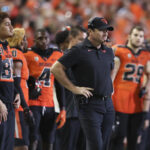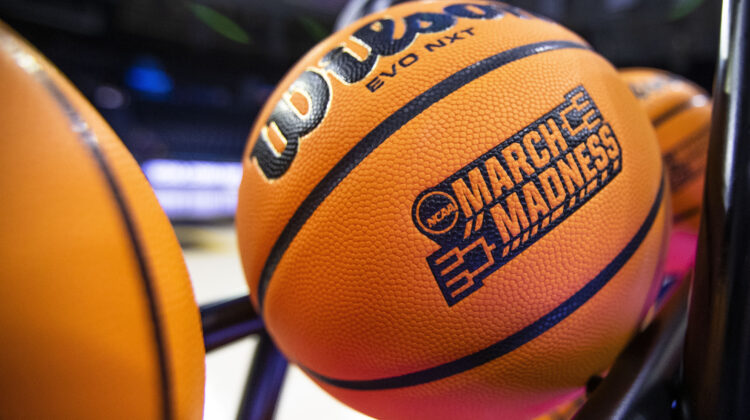Story by Jeff Metcalfe
Two of the four No. 1 seeds, Stanford and Indiana, failed to survive the first week of the NCAA Tournament.
Will the two remaining, South Carolina and Virginia Tech, make it through the second week to reach the Final Four in Dallas?
Or will land mines ahead claim at least one more No. 1 by the conclusion of the regionals Monday in Greenville, S.C., and Seattle?
The Pac-12 enters the Sweet 16 without Stanford for the first time since 2007 but with three second-round winners: Utah, the regular season co-champion, plus UCLA and Colorado.
The No. 2 Utes are slight seeding favorites over No. 3 LSU but 5-point betting underdogs. Defending national champion South Carolina is a decided favorite over No. 4 UCLA while No. 2 seed Iowa is a 5.5-point favorite over No. 6 seed Colorado.
So it would take an upset — as defined by the oddsmakers — for the Pac-12 to advance a team to the Elite Eight, something it has accomplished every year since 2016.
The Pac-12 last went without a Final Four participant in 2018, when a quartet of teams lost in the regionals.
The Mountain schools are in rarified air with their deepest NCAA runs since 2003 (Colorado) and 2006 (Utah), both before their entrance into the Pac-12. Now, the newest members and an outgoing school (UCLA) are carrying the torch for a conference with the most Final Four appearances in the country (seven) since 2016.
Here are Hotline predictions for the Sweet 16.
Friday
No. 2 Utah (27-4) vs. No. 3 LSU (30-2)
The Utes’ narrow second-round victory (63-56) over No. 10 Princeton can be construed either as a red flag or a win-ugly game that proves they can survive even if their offense is awry (1-of-15 from 3-point range). Coach Lynne Roberts described it as the “culmination of winning those hard games that maybe in the past we weren’t able to get over the hump there.”
Against LSU, which is averaging 83.2 points per game, Utah (83.5 ppg) will be on more familiar ground stylistically but also up against AP All-America first-teamer Angel Reese, a 6-foot-3 sophomore forward. All Reese did against Michigan in the second round was put up 25 points, 20 rebounds and five blocks, the first player to reach those numbers in an NCAA game since 2000.
Utah has its own star in Pac-12 Player of the Year Alissa Pili, who had a combined 61 points, 18 rebounds and 11 assists in the first two rounds.
LSU’s only losses are to South Carolina and Tennessee, but its strength of schedule (No. 79) is considerably lower than Utah’s (No. 29). The victor meets the winner between No. 4 seed Villanova and No. 9 Miami. This Greenville regional feels like the Pac-12’s best path to the Final Four. Pick: Utah
No. 6 Colorado (25-8) vs. No. 2 Iowa (28-6)
ESPN rates Iowa guard Caitlin Clark (26.8 ppg) as the best remaining player in the NCAA Tournament, a spot she also held going into the first weekend. Clark, a 6-foot junior, exudes a confidence akin to Diana Taurasi, leading the Hawkeyes to a national-best 87.4 ppg.
“Everybody knows Iowa,” Colorado coach JR Payne said. “They are probably everything you want in a basketball team.”
Colorado’s second-round road victory over No. 3 Duke showed a maturity from veterans Jaylyn Sherrod, Quay Miller and Aaronette Vonleh that, at minimum, should make the Buffaloes competitive against Iowa. Frida Formann’s 3-point shooting is a major variable for Colorado.
Colorado allows just 58.7 ppg and must wrangle the Hawkeyes into the 60s to have a realistic shot.
“We do hang our hat defensively,” Payne said. “We take a lot of pride in being stingy, making touches difficult, things like that.”
The winner in Seattle faces the winner between No. 5 Louisville and No. 8 Mississippi, which upset Stanford. Pick: Iowa
Saturday
No. 4 UCLA (27-9) vs. No. 1 South Carolina (34-0)
There’s a direct comparison for these teams, which played on Nov. 29 with South Carolina winning at home 73-64.
“They’re better, we’re better,” UCLA coach Cori Close said. “They are a tremendous team, undefeated for a reason. But we’re really talented, too, and growing in our confidence. I didn’t know if we would meet them again, but I definitely wanted to learn some important lessons from that so we would be ready if we got the opportunity.”
South Carolina’s 6-foot-5 senior forward Aliyah Boston wasn’t called upon for big numbers in South Carolina’s first two tournament wins but might be against UCLA. Bruins senior guard Charisma Osborne was sensational in the second round against Oklahoma with a career-high 36 points, eight rebounds and four assists.
South Carolina is on a 40-game winning streak dating back to the start of the 2022 NCAA Tournament and vying to become the first repeat national champion since Connecticut’s four-year run from 2013-16.
The Gamecocks also won it all in 2017 under coach Dawn Staley and lost to eventual champion Stanford in the 2021 semifinal.
The winner draws the winner between No. 2 Maryland and No. 3 Notre Dame in Greenville. Pick: South Carolina
VanDerveer not sold on two regional sites
The decision to have only two regional sites, with eight teams at each, was made in 2019 by the Division I women’s basketball committee and is only now taking effect.
Whether it’s a good idea or not is to be seen.
“They made that decision before we had started drawing the crowds we have,” Stanford coach Tara VanDerveer said in February. “I think the regionals really could stand on their own. I don’t think you have to have eight teams in Seattle. That could actually hurt our crowds. You’re getting all these games with the same number of people.
“We have enough hotbeds of women’s basketball. The crowds have been fantastic this year. I think we’ll grow out of the eight-team regional and go back to the four-team regional very soon.”
Pac-12 associate commissioner Rhonda Lundin Bennett was on the women’s basketball committee leading up to the eight-team regional decision.
“It’s hard to decide if it’s a good idea or not until you go through it,” Bennett said. “I know being on the committee when those discussions were happening, being able to centralize for fans and have that many quality teams at those regionals will be a really special environment.
“We’ve heard from fans that they enjoy coming when there are a lot of games being played. There’s been a lot of women’s basketball media and women’s basketball community advocating for some consolidation, so that was the impetus of the decision to move to two regional sites.”
The two-regional format is set through at least 2026. Upcoming sites are Albany, New York and Portland, Oregon in 2024; Birmingham, Alabama and Spokane, Washington, in 2025; and Fort Worth, Texas, and Sacramento in 2026.
Upcoming Final Fours include Phoenix in 2026 and Portland in 2030.
*** Send suggestions, comments and tips (confidentiality guaranteed) to pac12hotline@bayareanewsgroup.com or call 408-920-5716
*** Follow Metcalfe on Twitter: @jeffmetcalfe
*** Follow Jon Wilner on Twitter: @WilnerHotline
*** Pac-12 Hotline is not endorsed or sponsored by the Pac-12 Conference, and the views expressed herein do not necessarily reflect the views of the Conference.
Related posts:
 Wilner – Pac-12 survival: Our forecasts for media rights revenue, network partners and expansion as the saga continues
Wilner – Pac-12 survival: Our forecasts for media rights revenue, network partners and expansion as the saga continues
 Arizona Wildcats the next target for Big-12 ?
Arizona Wildcats the next target for Big-12 ?

(AP Photo/Ralph Freso, File)
Wilner – Pac-12 collapse: Tracing the 12 strategic blunders that led to Doomsday
Oregon State head coach Jonathan Smith l(AP Photo/Amanda Loman)
Wilner – All about Washington State and Oregon State, from the Pac-2 and a reverse merger with the MW to the bylaws and “war chest”

